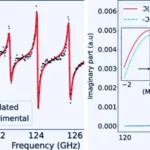Key Points
- MIT’s SURD algorithm identifies causal relationships in complex systems across fields, from biology to economics.
- SURD generates maps illustrating cause-and-effect links, identifying unique, synergistic, and redundant relationships between variables.
- Inspired by Claude Shannon’s information theory, the algorithm assesses systems as information transfer networks.
- The tool shows potential across scientific fields, offering new ways to examine systems like climate models, neural networks, and ecosystems.
Understanding what drives changes in real-world systems—whether it’s a shift in animal populations, stock prices, or climate patterns—has long been challenging. Numerous interdependent variables often obscure causality in these systems, making it difficult to pinpoint the root causes of specific effects.
To tackle this, a team of engineers at MIT has created a versatile algorithm capable of identifying causal relationships among variables in complex systems. By analyzing data over time, the algorithm, known as SURD (Synergistic-Unique-Redundant Decomposition of Causality), measures the interactions between variables and identifies those most likely to influence others. It can also distinguish between unique, synergistic, and redundant causal relationships.
For instance, unique causality indicates a single variable’s effect on another, while synergistic causality requires a pair of variables to impact an outcome. Redundant causality exists when multiple variables have similar effects on an outcome.
The MIT team applied the SURD algorithm to various benchmark scenarios, from marine species interactions to climate variables, and successfully mapped causality in all cases. This process generates a “causality map” showing links between variables, offering insights into their cause-and-effect relationships. The algorithm’s information-theory-based approach treats each system as a messaging network where changes in one variable can predict changes in others. This concept is inspired by Claude Shannon’s work on information theory.
SURD can even account for “causal leakage,” identifying situations where the available variables can’t fully explain a system’s behavior, suggesting that additional factors should be considered. MIT graduate student Álvaro Martínez-Sánchez emphasizes the method’s wide applicability, noting it could benefit fields like neuroscience, climate science, economics, and fluid dynamics.
MIT researchers plan to use the SURD algorithm in aerospace design to identify variables that could improve aircraft fuel efficiency. By embedding causality into models, they hope to understand better the relationships between aircraft design elements and overall efficiency. The algorithm and findings, published in Nature Communications, are available online for researchers across disciplines to test in their respective fields.










